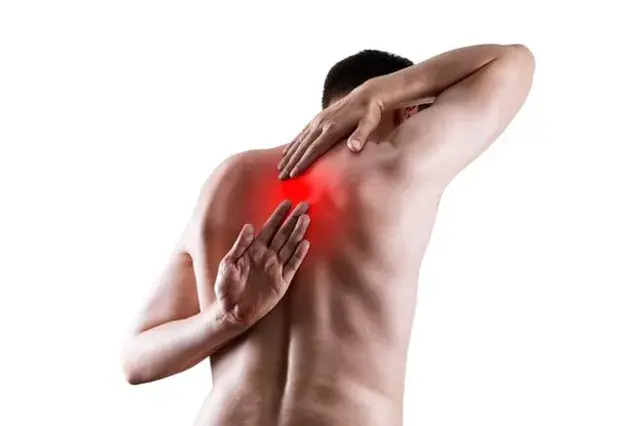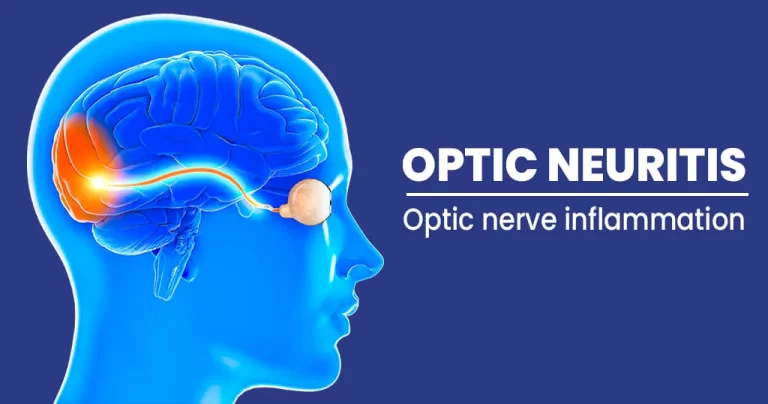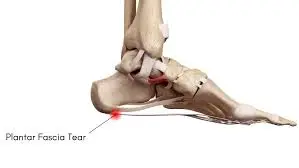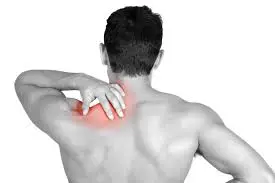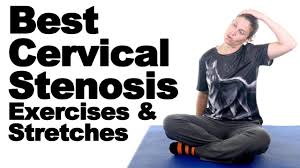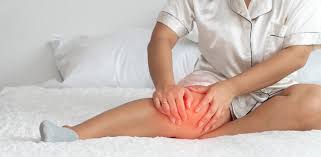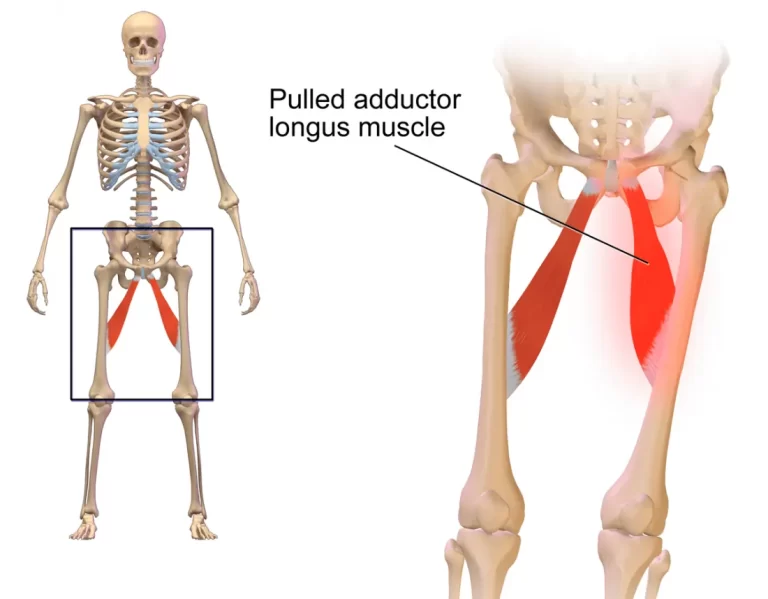Thoracic Radiculopathy
Radiculopathy is caused by the compression or irritation of a nerve root located in the spinal column. In the case of “Thoracic Radiculopathy,” the symptoms are caused by a disease process that occurs within the thoracic spine.
What is a Thoracic Radiculopathy?
Thoracic radiculopathy refers to a condition where the nerve roots in the thoracic (mid-back) region of the spine are compressed or irritated, leading to pain, numbness, weakness, or tingling sensations along the nerve’s pathway. This condition can result from various factors such as degenerative changes in the spine, herniated discs, spinal stenosis, trauma, infections, or tumors.
Anatomy of the Thoracic Spine:
- Vertebrae: Adult humans have 12 thoracic vertebrae (marked as T1-T12), which are located between the cervical and lumbar vertebrae, with a typical size that is greater than the cervical but shorter than the lumbar. Each of the 12 thoracic vertebrae has a corresponding pair of ribs. The thoracic vertebrae expand in size as they fall towards the lumbar vertebrae; this is because the lower vertebrae must support more of the body’s weight when a person stands against gravity.
- Intervertebral Discs: The vertebrae are separated by intervertebral discs of fibrocartilage, which are flexible cartilage discs that allow movement in the spine and have a shock-absorbing or cushioning function as well. An intervertebral disc is made up of an inner gelatinous nucleus pulposus surrounded by a ring of fibrocartilage called the annulus fibrosus.
- Spinal cord and nerves: Your spine houses the spinal cord and nerves. As they travel down the spinal canal, these “electrical cables” send signals from your brain to your muscles. Nerve roots leave the spinal cord via vertebral openings (foramen).
- Intervertebral Foramina: These are openings located on both sides of the vertebrae through which nerve roots pass. The foramina allows nerves to extend out from the spinal cord to innervate different parts of the body.
- Facet Joints: Facet joints, are the presence of small joints formed where the rib connects with the vertebral body. These are called costal facet joints. The costal facet joints of the thoracic spine allow for rotation, flexion, and rotation.
- Ligaments: Various ligaments support the thoracic spine, including:
- the anterior longitudinal ligament (along the front of the vertebrae),
- posterior longitudinal ligament (along the back of the vertebrae),
- ligamentum flavum (connecting adjacent laminae),
- interspinous ligaments (between spinous processes), and
- Radiate Ligament They have 3 bands: superior, middle, and inferior.
- The costotransverse ligament
- The Lateral costotransverse ligament
- The superior costotransverse ligament
- Muscles: Muscles in the thoracic region play a crucial role in supporting the spine and facilitating movement. These muscles of the thoracic spine are vital for maintaining posture, stability, and movement in the upper back. They are arranged in layers.
- Superficial back muscles These are the muscles that are closest to your skin. They are large muscles that include
- Trapezius: The trapezius is A large triangular-shaped muscle that runs from the base of your head to the center of the back. It is responsible for moving the shoulder blades and holding the weight of the arms.
- Rhomboids: The rhomboids, which are located between the shoulder blades and linked to the spine and shoulder blades, aid in stabilizing the shoulder blades and assist in actions such as drawing them downward and backward.
- The intermediate back muscles are positioned deep inside the superficial back muscles. As so, they form the thoracic spine’s intermediate portion of muscles.
- The erector spinae muscles: run parallel to the spine, extending from the base of the skull to the sacrum. They help to maintain posture and aid in actions like bending and twisting.
- Deep Back Muscles These muscles are located deep in the erector spinal muscles. They are a collection of short muscles known as transversospinales.
- Superficial back muscles These are the muscles that are closest to your skin. They are large muscles that include
- Blood Supply: The thoracic spine receives blood supply from various arteries, including the vertebral arteries, intercostal arteries, and branches of the aorta.
- nerve supply The thoracic spine covers the spinal cord and nerve roots. The nerves and nerve roots of the thoracic spine are in charge of transmitting and receiving signals from the muscles, skin, and organs of the chest and upper abdomen.
- Sympathetic nerves: The sympathetic nervous system is a component of the autonomic nervous system that regulates involuntary activities including heart rate, blood pressure, and digestion. The sympathetic nerves go through the thoracic spine and connect to the sympathetic ganglia.
- Vagus nerve: The vagus nerve, the tenth cranial nerve, regulates numerous critical systems in the body, including heart rate, respiration, and digestion. It travels through the thoracic spine to innervate organs including the heart, lungs, and stomach.
- The phrenic nerve: it starts in the cervical spine, travels down the thoracic spine, and innervates the diaphragm, the most important muscle involved in breathing.
- The intercostal nerve: also known as the ventral rami of the thoracic spinal nerves, emerges from the front of the spinal cord. The intercostal nerves travel between the ribs and supply information to the respiratory muscles (intercostal muscles).
- Dorsal rami of the thoracic spinal nerve: The backside of the spinal cord is where little branches of spinal nerves arise. The dorsal rami of the thoracic nerves transmit information to the thoracic muscles, joints, and skin. They control cutaneous sensations and thoracic muscle action.
Types of Thoracic Radiculopathy
Thoracic radiculopathy can affect just certain thoracic nerve roots. The thoracic spine is made up of twelve vertebrae (T1 through T12), each with a pair of nerve roots that leave the spinal cord on either side. When these nerve roots are crushed or inflamed, many kinds of radiculopathy develop. The most popular types are:
Upper thoracic radiculopathy: This kind of affects the nerve roots located in the upper thoracic spine (T1 to T4). Symptoms may include pain and discomfort in the chest and upper back, which may spread to the ribs and front of the chest.
Middle thoracic radiculopathy: This kind involves nerve roots in the middle thoracic spine (T5–T8). Symptoms may include discomfort in the mid-region that spreads to the front of the chest or covers around the ribs.
Lower thoracic radiculopathy: This kind of affects the nerve roots in the lower thoracic spine (T9–T12). Symptoms may include lower back pain or discomfort, which may radiate to the ribs or abdomen.
What are the causes of Thoracic Radiculopathy?
Thoracic radiculopathy is caused by an obstruction between thoracic nerve roots. Any disease, physical alteration, or damage to these nerves impairs their function, resulting in painful symptoms. Common causes of thoracic radiculopathy include:
- Degenerative disc disease is caused by long-term wear and tear.
- Bulging or herniated discs in the center of your back.
- A compressed or pinched nerve
- spinal stenosis
- Bone spurs in your spine
- Spondylolisthesis
- Ossification of the spinal ligaments
- A spinal injury
- Connective tissue disease
- Rheumatoid arthritis in the spine
- Spinal injury or infection
- Spinal tumors, including bone cancer
- A tumor in the thoracic spine
- Degenerative joint disease
- Diabetes mellitus
- Diseases like tuberculosis
What are the risk factors for Thoracic Radiculopathy?
While a back injury may happen to anybody, specific habits may place you at a higher risk for thoracic radiculopathy. These risk factors include:
- Aging that naturally leads to spinal degeneration
- A family history of spinal disorders, such as radiculopathy
- Poor posture
- Spinal abnormalities, such as scoliosis, kyphosis
- Being overweight or obese
- Repetitive motions in work, hobbies, or other activities
- Rheumatoid arthritis and osteoarthritis are two examples of joint conditions.
- Bone cancer or a spinal tumor
- Herniated disc
- Spinal stenosis
- Spine infection
- Traumatic spinal injury
What are the symptoms?
Signs and symptoms of thoracic radiculopathy include:
- Sudden pain – shooting, intense, burning, and/or aching
- A burning or shooting pain that begins in your lower neck and spreads to your chest, posterior shoulder, and back.
- Pain associated with a change in posture
- Tingling (similar to pins and needles sensations)
- Weakness in your arm and trunk affects your motions.
- Numbness and tingling sensations in your neck, back, chest, and back of shoulders (complete or just a decreased sensation)
- Swelling/inflammation
- Muscle/limb weakness
- A decrease in reflexes in your arms or legs
- A reduced range of motion
- Problems sitting
- A sharp pain when doing strenuous activities
- Muscle spasms or tightness
- Loss of or reduced reflexes
- Unable to stand straight or keep their balance.
- Complications of the neurological system
- Pain and discomfort around a pinched nerve.
- The thoracic spine is a complicated structure that supports the rib cage while also protecting your heart and lungs. Any structural alterations to this spinal area can have an impact on how vital organs operate.
in severe cases, symptoms may worsen to
- Difficulty with coordination
- Pain in your neck, arm, leg, or lower back
- Tingling, numbness, or weakness
- Trouble keeping your balance
- Trouble walking
- Struggling with fine motor skills, such as using a pen to write or using a zipper
- Urinary or stool incontinence
How to diagnose Thoracic Radiculopathy?
Your physician might conduct the following tests to diagnose your thoracic radiculopathy:
- X-ray: An X-ray can show the narrowing and changing alignment of your spinal cord, as well as any spinal fractures.
- Computed tomography (CT) scan: A CT scan shows 3D images and more detail of your spine than an X-ray can.
- Magnetic resonance imaging (MRI): An MRI can reveal whether soft tissue injury is causing nerve compression. It will also reveal any damage to your spinal cord.
- Electromyography (EMG): An EMG detects electrical impulses in your muscles. This can assist assess whether a nerve is functioning properly. This informs your healthcare practitioner if your symptoms are caused by pressure on your spinal nerve roots or whether another medical condition (such as diabetes) has injured your nerves.
what are the treatments for Thoracic radiculopathy?
Your doctor may suggest one or more of the following therapies for your thoracic Radiculopathy:
Medication.
- Your doctor may offer drugs to assist ease the discomfort caused by your thoracic radiculopathy. Over-the-counter NSAIDs: For most people, over-the-counter NSAIDs (such as aspirin or ibuprofen) are sufficient to manage their radiculopathy symptoms.
- Corticosteroids: Your healthcare professional may prescribe powerful anti-inflammatory drugs like prednisone to ease your pain. These can be taken in tablet form or injected directly into the afflicted region of your back.
- Topical Analgesics: creams, gels, or patches that include drugs such as lidocaine or capsaicin that can be applied directly to the painful spot to offer localized pain relief.
- Opioid Pain Medications: These are often reserved for severe cases of pain that cannot be successfully treated with other drugs, and their usage is strictly regulated because to the potential of dependency and negative effects.
Physical therapy
Physical therapy can help relieve discomfort and promote healing from thoracic radiculopathy.
Physical therapy aims to stabilize the spinal column by employing exercise to unload the spine and relieve pressure on the spinal nerve roots. This is accomplished by physical therapy, which focuses on stabilizing the spinal column and exercising to unload the spine and relieve pressure on the spinal nerve roots. This is done through:
Assessment
The first step in identifying thoracic radiculopathy begins with a review of current and past medical and surgical history along with a thorough physical examination, current symptoms, functional limitations, and specific goals for treatment.
physical examination: it involves assessing posture, range of motion, muscular strength, sensitivity, reflexes, and any neurological abnormalities caused by nerve compression
Pain management
- Teach pain treatment options such as using hot or cold packs, proper body mechanics, ergonomic changes at work or home, relaxation techniques, and figuring out important factors such as bad posture, improper lifting skills, or sedentary lifestyle choices.
Modalities
- Ice and heat therapy to reduce pain and discomfort associated with muscle spasms.
- Heat Therapy:
- Application of heat packs or warm compresses to the lower back to relax muscles, increase blood flow, and reduce pain.
- Cold Therapy:
- Ice packs or cold therapy for acute pain or inflammation management, are applied in a controlled manner to avoid skin damage.
- Electrical Stimulation:
- Transcutaneous Electrical Nerve Stimulation (TENS) or interferential current therapy (IFT) helps to reduce pain by blocking pain signals from reaching the brain.
- Ultrasound: Ultrasound applied on a tender point can help to improve blood flow and promote healing.
- Infra-red heat therapy: it helps to reduce pain, reduction of muscle tension, relaxation, and improve circulation.
- Heat Therapy:
Exercise
The best way to improve your thoracic mobility is to move more. Daily, consistent mobility exercises and stretching are required to improve stiffness. Experiment with organizing exercises throughout the day or putting up a particular period.
Scapular Retraction
Stand up straight and slowly draw your shoulders back, as if you were aiming to make your shoulder blades connect behind you. It’s a basic workout that has great easing potential. A similar impression may be created by standing in a doorway with one hand on either side and barely stepping through.
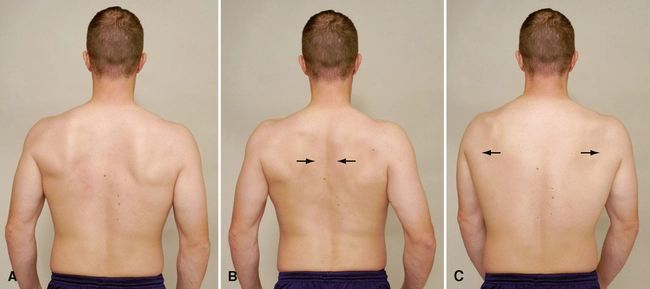
Thoracic Rotations
Sit on a stability ball or chair, feet flat on the floor. Position the patient’s hands behind your head, with their elbows pointed outward. Slowly twist your upper body to one side, aiming to get your elbow near the opposing knee. Return to your starting position and repeat on both sides. Exercise in a controlled manner, with a concentration on thoracic spine rotation.
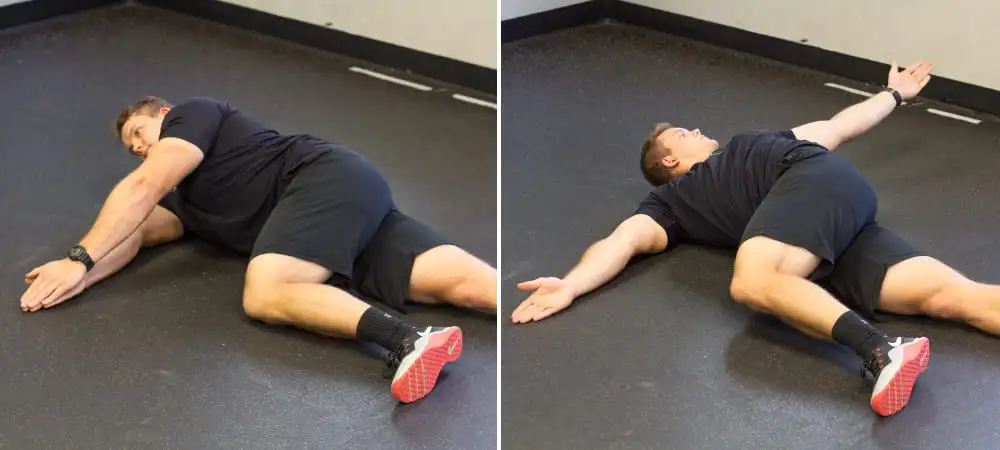
Cat and Cow
This is a widely recognized and effective essential movement.
- Improves posture and balance.
- Strengthens and stretches the spine and neck.
- Stretches the hips, abdomen, and back.
- Increases coordination.
- Provides massages and activates organs in the abdomen, including the kidneys and adrenal glands.
- Creates emotional balance.
- Relieves stress and calms the mind
If kneeling is not a possibility, you can perform the same action standing with your hands on a desk or counter. The surface must be hip-level or below.
If the strain of a standard quadruped posture bothers your wrists, you can execute this action on your forearms instead.
Tips: Take full, deep breaths throughout. When going into extension, be careful not to twist your lower back.
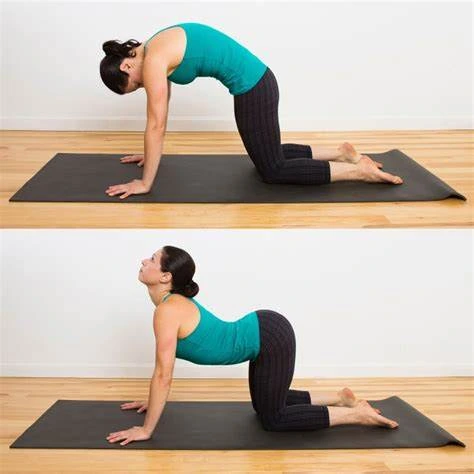
Thread the needle
This is an excellent exercise for thoracic rotation with some degree of extension. The extra difficulty of working against gravity while on all four limbs makes it extremely effective and less likely to twist the lower back.
- Inhale and elevate your right arm to the sky, allowing the chest and arm to expand to the right. Allow your eyes to follow your right arm
- Exhale to lower your right arm and slip it beneath your left arm, extending across your body and down the floor.
- Move your eyes to the left. Allow your left elbow to bend to allow for the stretch as your right ear rests on the floor.
- Repeat 4-5 repetitions, then change arms.
Tips: Maintain a reasonable pace and breathe completely into the rib cage.
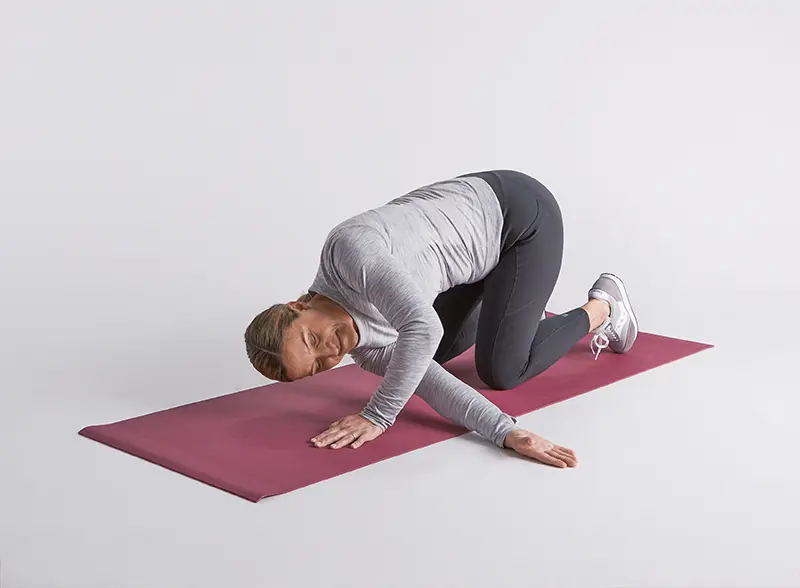
Downward Dog
This is another good mobility exercise for thoracic extension and opening up the front shoulders.
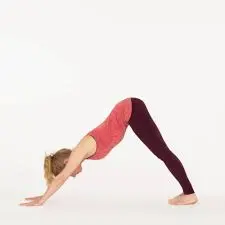
- Start in a plank position. Exhale to lift your hips off the floor and bend your hips into an upside-down V.
- Inhale and push your chest through your arms towards your legs.
- Exhale and push your weight forward, returning to the plank posture.
- Repeat 5 times.
Tips: Move at a slow to moderate pace, pausing Downward Dog to breathe deeply and feel your spine lengthen and extend. If the stretch is too strong, bend your knees slightly. Downward dogs can always be modified by placing your arms on a counter, chair, or table to make this stretch more accessible.
Windmill
- Lie on one side of the floor, legs bent and placed in front of the hips. Your arms should be straight out in front of you at shoulder level, stacked.
- Keeping your knees together, raise your upper arm towards your ear and circle it up over your head, opening your shoulders and chest to the sky, until your arm reaches the opposite direction from where it began. Turn your attention to follow your arm’s movements.
- Stay in this position and take 2–3 deep breaths, then slowly retrace your movements, moving the arm, head, chest, and shoulders back to the starting position.
- Repeat 3 times, then perform 4 repetitions on the opposite side.
Tips: Keep your knees positioned exactly on top of each other to prevent your pelvis from shifting. If stiff shoulders restrict you from reaching the opposite side, put your head on a small cushion and move your arm as far as you can without pain.
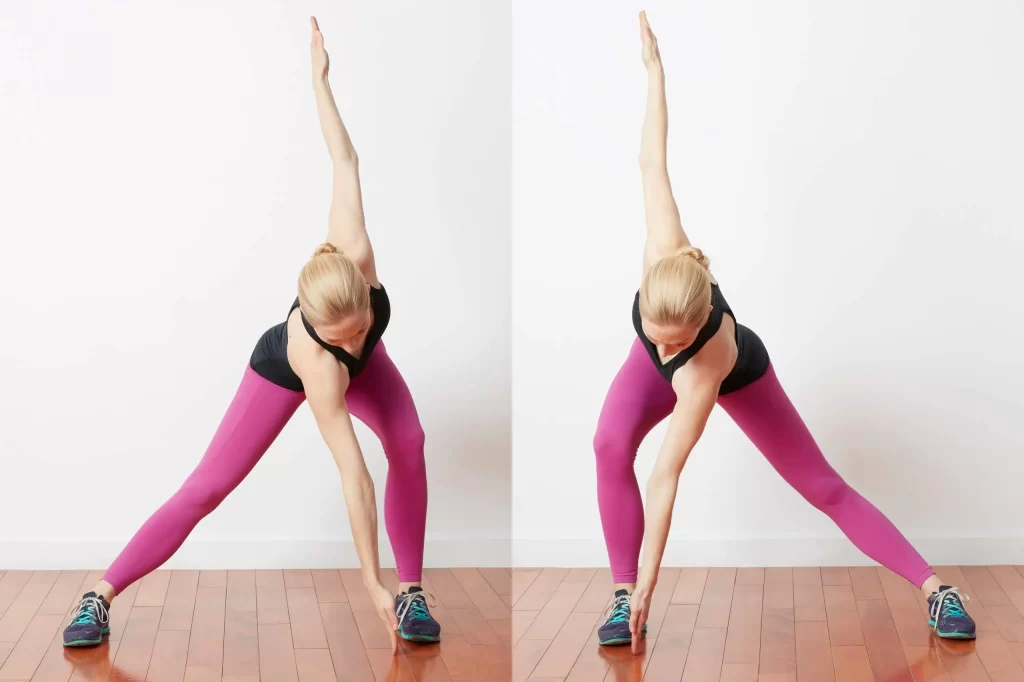
Assisted thoracic extension on a foam roller
You may also use props like a foam roller or rolling ball.
- Place the roller on the ground horizontally and sit in front of it, facing away from it. Lean on it with the bottoms of your shoulder blades resting on it. Put your hands behind your head to help support your neck.
- Using your breath, expand your chest and bend backward over the roller to make an arc in your upper back.
- If your neck feels supported, relax your hands and stretch your arms up and back. Stay in this position and breathe deeply into all sides of your rib cage, allowing your body to soften towards the floor. Stay for a few breaths before returning your arms to your side.
- Repeat 3–4 times.
A more advanced variation involves continuing the stretch while holding a dumbbell with the arms raised overhead.
This stretches the chest and extends the thoracic spine.
Tips: Continue to breathe completely into your ribs. If the stretched posture puts strain on your neck, place your hands, a block, or a hard cushion beneath your head.
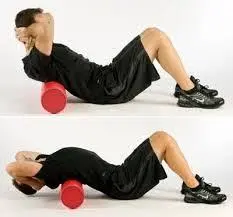
Child’s Pose with an exercise ball
This exercise will expand your chest while providing support for your entire arm throughout the twist.
- Kneel on the floor, facing the exercise ball. Sit back on your heels, opening your knees wider than your hips.
- Place both hands on the workout ball and move it forward until you’re bent forward like a child. Bring your chest as low towards your knees as possible without causing shoulder strain.
- Breathe in this position for 2 deep breaths. Then, keeping your hands on the ball, roll the ball to the right so that your chest is opening to the right side. Looking under your right arm, focus on breathing and lengthening the spine.
- Return to the center and repeat the twist to the left while looking beneath your left arm.
- Repeat up to the center, then roll back up to the beginning position, one vertebra at a time.
- Complete 3–5 reps on each side.
Tips: If kneeling is not an option, try sitting on a bench or low stool.
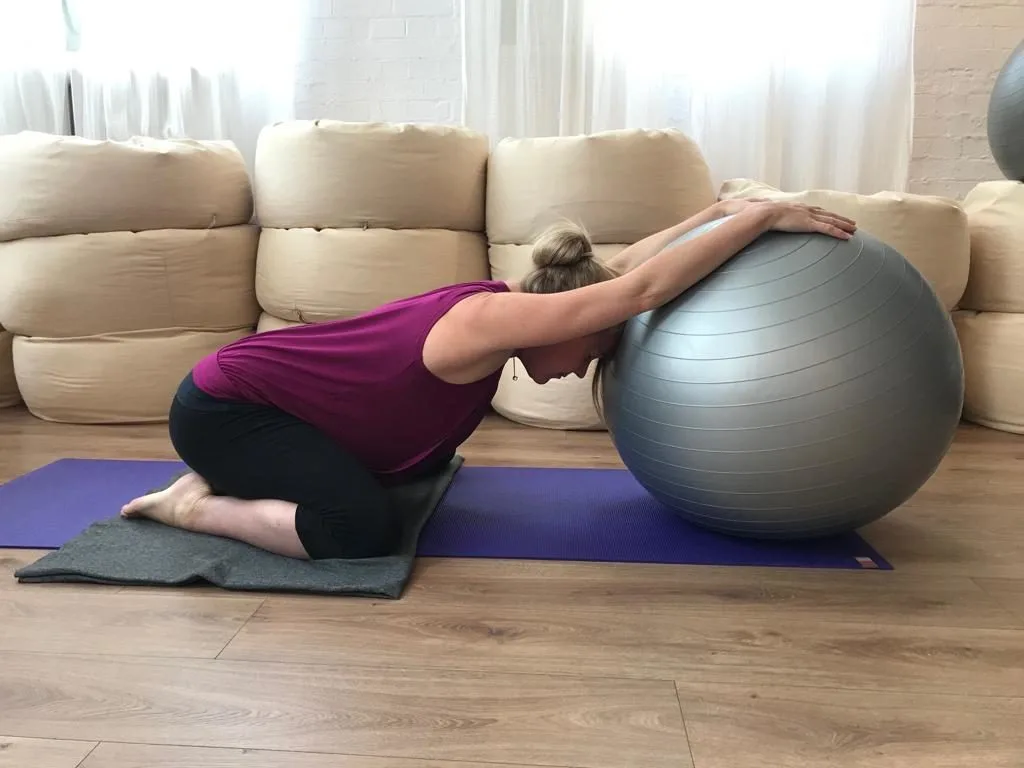
Pilates Spine Twist variation
For this variant, sit in a chair with a block or hard cushion between your knees.
- Lengthen your spine and feel your sit bones on the chair. Cross your arms across your chest.
- On the exhale, compress the cushion between your legs, think of yourself growing taller, and spin three times to one side, moving a bit further each time.
- Inhale to return to the center.
- Repeat the other way. Repeat the whole sequence 4-5 times.
Tips: Keep your legs squeezed together to prevent your pelvis from moving. Keep breathing and try to become higher with each repetition.
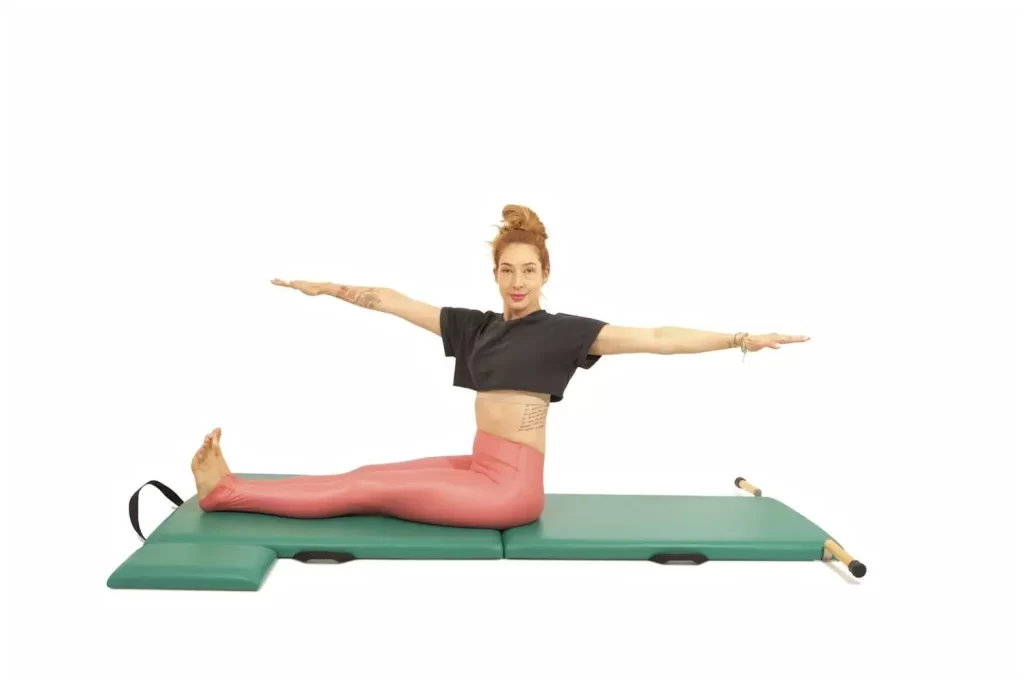
Side Angle Pose (Parsvakonasana)
This Yoga pose will be done sitting on a chair to focus on maximizing spinal rotation.
- Sit on the edge of the chair and open your legs wide, Straighten one leg to create a lunge-like position in the legs.
- Keeping your spine straight, lean over your bent leg, slide the arm down your lower leg toward your ankle, and reach your arm towards the floor.
- On the inhale lift your opposite arm up and over your head, reaching it to the ceiling or the opposite. Keep your elevated arm straight, open your arm and chest, and look up at the ceiling.
- Exhale to return to the beginning position, then pull back up to a sitting posture with your legs bent.
- Repeat on the other side. Complete 4–5 reps on each side.
Tips: Aim to keep your spine long and keep breathing into your ribcage.
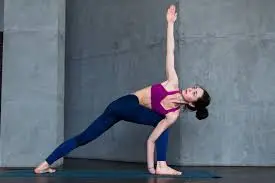
Manual therapy: Manual therapy can help to improve flexibility, reduce pain, and improve nerve function. This includes techniques such as
- massage,
- joint mobilization,
- Soft tissue mobilizations (massage)
- Neural Glides
- Heat therapy
- Shockwave Therapy
- Taping
- A tailored home exercise program
- Graded Exposure to load program
surgical management
When conservative treatment and steroid epidural injections do not give considerable or long-term relief, some patients are recommended for surgical consideration.
The 3 most frequent thoracic procedures are described, They include.
Posterior thoracic fusion This procedure is performed by placing bone grafts or bone graft substitutes in between the affected vertebrae to promote bone growth and eventually fuse the vertebrae into a single, solid bone. Spinal instrumentation or implants, including rods, plates, screws, and interbody devices, may be used to stabilize the spine following fusion.
Thoracic Laminectomy A laminectomy is the removal of the lamina, a part of the spine that forms a bony “roof” over the spinal canal.
Thoracic Discectomy: A herniated thoracic intervertebral disc is surgically removed from the spinal column during a minimally invasive lateral thoracic discectomy, also known as a mini-open lateral thoracic discectomy.
Spinal decompression surgery. During this surgical procedure, your expert will remove the source of your thoracic radiculopathy, such as a bone spur or herniated disc.
Laminoplasty. The procedure for more severe cases of thoracic radiculopathy involves widening the gap through which your spinal cord passes. This helps to relieve pain and other symptoms.
Complication
The main issue with thoracic spine surgery is complications. They include:
- Infection
- Bleeding
- Nerve injury
- Lung Injury/Collapse
- Rib Injury
- Increased pain
- Spinal cord injury
The complication rate can reach 35%, and because of the specific characteristics of the thoracic spine, rib attachments, surrounding lungs, numerous big blood arteries, spinal cord, and other essential organs, problems following surgery can be serious and life-threatening.
Infections, re-herniation of the disc, prolonged discomfort, more disc degeneration, and spinal cord or nerve damage are all possible consequences. Some issues may not show until after surgery. Some appear fast, while others might take months to become apparent.
Do’s and Don’ts
Do’s
- Apply heat or ice: Alternate between heat and ice packs on your back for 15-20 minutes at a time. Heat can help relax muscles and improve blood flow, while ice can help reduce inflammation and pain.
- chevron_right
- Heat pack on the back
- Maintain good posture: Stand tall with your shoulders back and down, and keep your core engaged. This will help to take pressure off your spine and nerves.
- Good posture
- Get regular exercise: Exercise can help to strengthen your core muscles and improve your flexibility, both of which can help to reduce pain. However, avoid strenuous activity that could aggravate your condition.
- See a physical therapist: A physical therapist can teach you exercises to strengthen your core and improve your flexibility. They can also help you to improve your posture and body mechanics.
- Manage your weight: Being overweight can put extra strain on your spine and nerves. Losing weight can help reduce your problems.
Don’ts:
- Slouch: Slouching can put extra pressure on your spine and nerves.
- Twist or bend awkwardly: Avoid twisting or bending awkwardly, as this can irritate your nerves.
- Lift heavy objects: Avoid lifting heavy objects, as this can put a strain on your spine.
- Smoke: Smoking can worsen inflammation and pain.
- Ignore your pain: If you are in pain, don’t ignore it. Consult a doctor for a diagnosis and treatment plan.
See a doctor if:
- You have discomfort that extends down your arm or leg
- You have numbness or weakness in your arm or leg
- You have difficulties managing your bowels and bladder.
- You have a fever or chills.
Summary
Thoracic radiculopathy is a spinal disorder characterized by the compression or irritation of nerve roots in the upper back (thoracic spine). It is less prevalent than radiculopathy in the neck or lower back, but it could be similar to other conditions such as heart disease or shingles.
Here is a brief overview of thoracic radiculopathy:
Symptoms: Thoracic radiculopathy can cause chest, mid-scapular, lower extremity, or stomach discomfort, as well as lower limb paralysis if myelopathy is present. pain, numbness, and tingling in the chest, belly, or back that can spread to the front of the body. Pain may intensify as you breathe or cough.
Causes: The most common cause is narrowing of the area where nerves exit the spine as a result of disc degeneration, bone spurs, or another disorder. Diabetes may also be a factor.
Diagnosis: This can be difficult, but doctors may utilize X-rays, an MRI, or electromyography to confirm the diagnosis.
Treatment often includes non-surgical methods such as medication, physical therapy, and injections. Surgery may be necessary in rare cases.
FAQs
What is the pain pattern of thoracic radiculopathy?
Symptoms of thoracic radiculopathy include burning or shooting pain in the ribs, sides, or belly, as well as abdomen numbness and tingling.
What not to do with radiculopathy?
The following behaviors and habits may worsen lumbar radiculopathy:
Prolonged sitting.
Coughing and sneezing can have a quick impact on the spine.
Twisting the spine (i.e. golf, gymnastics, some yoga poses)
High-impact exercise, including Running or jogging. Weightlifting.
What are the risk factors for radiculopathy?
Risk Factors: Men are impacted at a somewhat higher rate than women. Heavy physical labor that requires lifting, smoking, driving, operating vibrating equipment, neck trauma (from sports or a car accident), and a history of spinal nerve damage are all risk factors for this disorder.
What does thoracic nerve pain feel like?
Pain and discomfort begin in the neck and spread to the shoulder, back, and chest. Tingling or numbness may be felt across the neck, posterior shoulder, back thorax, and chest. Muscle spasms and postural alterations in reaction to the injury.
What is the pain pattern of thoracic radiculopathy?
Symptoms of thoracic radiculopathy include burning or shooting pain in the ribs, sides, or belly, as well as abdomen numbness and tingling.
References
- Menzies, R. (2022, May 9). Thoracic mobility exercises for a strong, Pain-Free back. Healthline. https://www.healthline.com/health/fitness/thoracic-mobility-exercises#bottom-line
- Knadmin. (2021, December 22). Thoracic Radiculopathy/Myelopathy | PM&R KnowledgeNow. PM&R KnowledgeNow. https://now.aapmr.org/thoracic-radiculopathymyelopathy/
- Thoracic radiculopathy: Causes, symptoms, treatments. (2024, March 18). Centeno-Schultz Clinic. https://centenoschultz.com/condition/thoracic-radiculopathy/
- Thoracic Radiculopathy Vancouver – Dr. Craig Best. (2023, September 22). Dr. Craig Best. https://www.drcraigbest.com/spine-neck-pain/thoracic-radiculopathy-vancouver/
- Thoracic radiculopathy | Spine care | Bon Secours. (n.d.). https://www.bonsecours.com/health-care-services/spine-care/conditions/thoracic-radiculopathy
- Thoracic radiculopathy – upper back – conditions – musculoskeletal – What we treat – physio.co.uk. (n.d.). https://www.physio.co.uk/what-we-treat/musculoskeletal/conditions/upper-back/thoracic-ridiculopathy.php
- Page Updated on Mar 22, 2024, by Dr. Hosny (Interventional Spine Specialist) of The Spine & Rehab Group. (2024, March 22). Thoracic radiculopathy NJ & NYC. Spine & Rehab Group. https://www.thespineandrehabgroup.com/thoracic-radiculopathy
- Foorsov, V., & Pastoriza, S. M. (2018). Thoracic radicular pain. In Oxford University Press eBooks (pp. 237–242). https://doi.org/10.1093/med/9780190298357.003.0027
- Landa Spine & Orthopedic Center. (2019, April 19). Thoracic Radiculopathy – Landa Spine & Orthopedic Center. https://landaspine.com/conditions-and-procedures/thoracic-mid-back/conditions/thoracic-radiculopathy/
- Solanki, V. (2023, July 28). Thoracic radiculopathy – Type, Cause, symptoms, treatment. Samarpan Physiotherapy Clinic. https://samarpanphysioclinic.com/thoracic-radiculopathy/
- Zahran, A. (2019). Thoracic radicular pain. In Springer eBooks (pp. 617–620). https://doi.org/10.1007/978-3-319-99124-5_135
- SAN LEANDRO CA Thoracic Radiculopathy | Oakland Compressed Nerve Relief | Fremont. (2022, December 14). Allied Pain & Spine Institute. https://myalliedpain.com/san-leandro-thoracic-radiculopathy
- Thoracic radiculopathy – upper back – conditions – musculoskeletal – What we treat – physio.co.uk. (n.d.-b). https://www.physio.co.uk/what-we-treat/musculoskeletal/conditions/upper-back/thoracic-ridiculopathy.php

